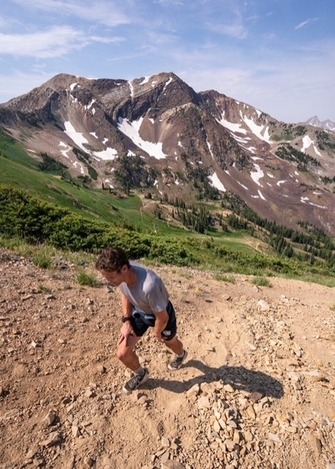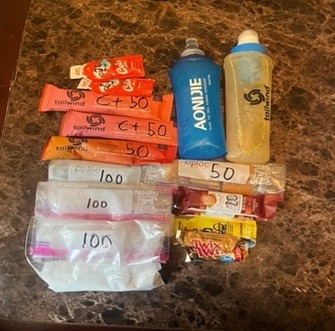Experimenting With Race Routines
By Simon Zink
Enjoy Winter NTS Factory Team Member
Time trials and race efforts have an important place in the training plan during the summer and fall. They provide not only a physical stimulus unlike anything else in our training program, but the opportunity to experiment with nutrition, warmup, pacing, and strategy. Since we typically only do a few of these efforts this time of year, it is important to recognize their purpose and take full advantage of it.
Races and time trials will naturally push you physically beyond training efforts. This will no doubt increase your physical capacity. However, a major benefit of these training sessions that is often overlooked, is the chance to practice your race routine. Performance on race day comes down to two primary elements: your current capacity (what you are capable of), and your ability to reach this maximum capacity in your effort. Your routine, which includes everything from your head space, to nutrition, to warmup, to your thoughts during the effort, contribute to allowing you to reach what you are capable of on that day. Finding the formula that enables this is a skill that needs to be developed and adapted as much as your physical fitness does.
The summer and fall is the time to work on improving this skill. Regardless of the season, the more you race the more comfortable and better you will get with your routine. Just like training. However, this time of year we have the luxury to take some more risks and optimize the routine that we can then focus on executing in the winter. We can start at the top with our ultimate goal: getting ourselves to perform at its  maximum capacity on the day, and work backwards, adjusting and experimenting with the variables that lead to this desired result. To simplify I am going to focus on four: nutrition, warmup, pacing, and mindset. Like any scientific test, the adjustments you make to these pieces should be precise and controlled. Start with tweaking one element at a time. Reflect on the outcome and then make a new tweak for the next effort. It’s important to note that you must treat these elements within the scope of the many factors that affect your performance that day. Whatever the outcome, the element you experimented with isn’t solely responsible. It doesn’t mean whatever you did isn’t the answer or conversely is the secret sauce. Make note of how you felt, both before, while executing, and after the effort in regard to your experimentation and make a logical plan for the next race effort.
maximum capacity on the day, and work backwards, adjusting and experimenting with the variables that lead to this desired result. To simplify I am going to focus on four: nutrition, warmup, pacing, and mindset. Like any scientific test, the adjustments you make to these pieces should be precise and controlled. Start with tweaking one element at a time. Reflect on the outcome and then make a new tweak for the next effort. It’s important to note that you must treat these elements within the scope of the many factors that affect your performance that day. Whatever the outcome, the element you experimented with isn’t solely responsible. It doesn’t mean whatever you did isn’t the answer or conversely is the secret sauce. Make note of how you felt, both before, while executing, and after the effort in regard to your experimentation and make a logical plan for the next race effort.

Nutrition:
Changing your fueling strategy for your race can take many forms. I’d focus on playing with timing,  volume, and composition. The bulk of your nutrition for a race is from the meals you consume leading up to it. Day of nutrition also includes any carbohydrate sources and caffeine as well. If you’ve never payed attention to your fueling for a race effort now is the time. Notice what you are eating, how much, and when. I am not a nutritionist or sports scientist and there is a ton of content out there regarding optimal fueling for endurance events. If you have a routine you like and looking to experiment, I’d try increasing how much you are consuming. In my experience most people are grossly under fueled for racing. This would include consuming gels, carbohydrate drinks, and chews, to see how your body reacts to having more carbohydrates in your system during your effort.
volume, and composition. The bulk of your nutrition for a race is from the meals you consume leading up to it. Day of nutrition also includes any carbohydrate sources and caffeine as well. If you’ve never payed attention to your fueling for a race effort now is the time. Notice what you are eating, how much, and when. I am not a nutritionist or sports scientist and there is a ton of content out there regarding optimal fueling for endurance events. If you have a routine you like and looking to experiment, I’d try increasing how much you are consuming. In my experience most people are grossly under fueled for racing. This would include consuming gels, carbohydrate drinks, and chews, to see how your body reacts to having more carbohydrates in your system during your effort.

Warmup:
Having a well-planned and thought out warmup is crucial to priming your body for an all out effort. This is something you need to have thought about, and preferably written down, beforehand. I like to start at my race time and work backwards, noting everything I do from the start time to when I begin my warm up. Most of the warmups we recommend follow a similar pattern in moving your body through each zone, starting from zone 1 and increasing the effort to zone 4. How much you time you spend in each zone is individualized. I’d challenge you to experiment with a warmup you may not be as comfortable with. For instance, instead of performing 15 min zone 1, 5 min zone 2, 5 min zone 3 and 2x3 zone 4, do everything the same except substitute the zone 4 for 8x30 sec on 30 sec off 80-100% of your max speed. I think viewing your warmup from a lens of speed rather than heart rate or perceived exertion as you work through your zones is valuable. What is the speed your race will require your body to function at? You need to find this speed and give your body a taste of the energy requirements and functions it will need to do to reach this speed. Doing 30 second intervals is going to naturally allow you to move into a higher speed with a similar exertion as zone 4. For me personally, I’ve found this primes my body better and helps me find the pace I need to ski in the race faster.
Pacing:
Experimenting with a different pacing tactics during a race effort in the summer and fall is good way to learn that your body is more capable than what you think. Strategically trying to go out at a pace faster than you initially believe you can maintain, or trying to stay with someone that on paper is faster, is a great test and very fun. It is amazing what you can do when you let go of the outcome. Regardless of what happens, you are exposing your body and mind to a space that is uncomfortable and not what it’s used to. Here lies the growth you are seeking. Give it a try.
Mindset:
Similarly to pacing, playing with your mindset in race setting is great way to learn a lot about yourself. Simply noticing your mindset in the context of the race can bring about some important realizations. Do you feel differently about these summer races than you would in the winter? Are these feelings improving or hurting your performance? For example, I often find myself performing much better in endurance events that are not cross country ski races or that do not matter. A lot of this I’ve determined is because I put less pressure on myself, and go into these “training” races with a much more open and curious mindset. I’m able to adapt and work through any adversity or negative feelings in the race much smoother than in the Winter. Having discovered this, I now try am trying to transfer that more productive mindset to my cross country skiing races. I think it’s worth flipping your typical mindset on its head and trying something new. You never know what you might find.
I haven’t mentioned anything about the type of race effort or time trial you are doing. That is on purpose. Yes, there are certain endurance event like roller ski races that will correlate stronger to a cross country ski effort, but there is an abundance of overlap in preparing yourself optimally for endurance events in running, biking, swimming etc. It helps to focus on the energy demands of the effort rather than the mode, when determining what your routine should be and how it can be applied to cross country skiing. For example if you are running a 5km road race, the physiological demands align relatively close to a 10km individual start race. Your routine for the running effort would then be relatively similar to how you would prepare for the cross country skiing effort.
Time trials and races this time of year are more than just an opportunity to push hard. They provide a platform to optimize your preparations and routines that will allow you to reach your full capacity on race day in the winter. Take advantage of this and appreciate the fun of doing them with some intent on developing your race routine.
